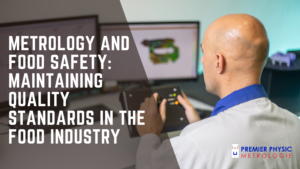In this comprehensive article, we delve into Calibration vs. Verification, clarifying their distinctions and importance, while highlighting the advantages of consistent calibration services.
Introduction
Calibration and verification are essential processes in various industries, ensuring the accuracy and reliability of measurement instruments. Understanding the differences between these two procedures is crucial for businesses and professionals who rely on precise measurements. This article will guide you through the nuances of calibration and verification, helping you discern when each is necessary and how regular calibration services can benefit your operations.
Calibration vs. Verification: Unraveling the Distinctions
Calibration Defined
Calibration is the meticulous process of adjusting and fine-tuning a measurement instrument to align it with a standard reference. This ensures that the instrument provides accurate and reliable measurements.
Calibration often involves adjusting various parameters within the instrument to eliminate any systematic errors that may have developed over time. It is akin to fine-tuning a musical instrument to produce the correct notes.
Verification Explored
Verification, on the other hand, is a different process. It aims to confirm that a measurement instrument is functioning correctly and within its specified tolerances. Verification does not involve making adjustments to the instrument itself but rather checks if it meets the predefined criteria for accuracy.
Think of verification as checking if a musical instrument is in tune without actually making any adjustments to it. It verifies if the instrument is still producing accurate results as it should.
When to Choose Calibration
Calibration becomes necessary when an instrument shows signs of inaccuracy or when it is exposed to conditions that could affect its precision. Here are some scenarios where calibration is crucial:
- Regular Maintenance: Periodic calibration is essential for instruments that are routinely used in critical measurements.
- Environmental Changes: If the instrument is moved to a different environment or experiences temperature or humidity fluctuations, it may require recalibration.
- After Repairs: Following any repairs or component replacements, calibration ensures that the instrument functions accurately.
- Manufacturer’s Recommendation: Many manufacturers specify calibration intervals for their instruments, which should be strictly followed.
When Verification Suffices
Verification is suitable for scenarios where an instrument appears to be functioning correctly, and there is no reason to suspect inaccuracy. Here are instances where verification is the preferred choice:
- Routine Checks: Regularly verifying instruments used for less critical measurements can ensure they remain accurate.
- Ongoing Monitoring: In industries where measurements are continuously monitored, verification checks can help detect deviations from accuracy.
- Comparative Analysis: When measurements are compared between multiple instruments, verification ensures consistency among them.
- Cost-Effective Solution: Verification is often more cost-effective than frequent calibration, making it suitable for instruments with less stringent accuracy requirements.
Benefits of Regular Calibration Services
Regular calibration services offer numerous advantages, contributing to improved efficiency and accuracy in various industries:
- Enhanced Precision: Calibration ensures that measurement instruments consistently provide accurate results, reducing errors in critical processes.
- Compliance with Standards: Many industries have strict regulatory standards that mandate calibration to maintain compliance.
- Extended Instrument Lifespan: Regular calibration can extend the lifespan of instruments by identifying and rectifying issues early.
- Improved Product Quality: Accurate measurements lead to higher product quality and customer satisfaction.
- Cost Savings: Preventing errors through calibration can save businesses money in the long run by avoiding rework and waste.
FAQs
Q: Is calibration the same as maintenance?
A: No, calibration focuses on adjusting the instrument to ensure accuracy, while maintenance involves general upkeep and repairs.
Q: How often should I calibrate my instruments?
A: The frequency of calibration depends on factors like usage, environmental conditions, and manufacturer recommendations. It can range from annually to more frequent intervals.
Q: Can I perform calibration in-house?
A: It’s possible to perform basic calibration in-house, but for precision instruments or industries with strict standards, professional calibration services are recommended.
Q: Is verification a substitute for calibration?
A: Verification is not a substitute for calibration but can complement it. Calibration is essential when an instrument is out of tolerance, while verification is used for ongoing monitoring.
Q: Are there industry-specific calibration requirements?
A: Yes, many industries, such as healthcare, aviation, and manufacturing, have specific calibration requirements to meet regulatory standards.
Q: How do I choose a reliable calibration service provider?
A: Look for accredited calibration labs with a track record of accuracy, adherence to standards, and prompt service.
Conclusion
In summary, calibration and verification are distinct processes that play crucial roles in ensuring the accuracy of measurement instruments. Calibration involves adjustments to maintain accuracy, while verification confirms that an instrument remains within its specified tolerances. Understanding when to use each method and the benefits of regular calibration services can greatly benefit businesses and professionals who rely on precise measurements.
Don’t compromise on accuracy—embrace calibration and verification to elevate the quality of your work and products.




